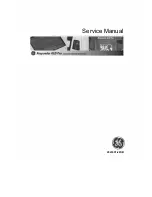
TU_US-BA-e-1714
9
transducer for an operation is the one that sends sufficient ultrasonic energy into the
material to be measured in the way that a strong, stable echo is to be received in the
instrument. There are several factors that affect the strength of the traveling ultra-
sound.
They are described as followed:
Initial signal strength: The stronger a signal is at the beginning, the stronger its echo
will return. Initial signal strength is mainly a factor of the size of the ultrasound emitter
in the transducer. A large emitting area will send more energy into the material being
measured than a small one. Thus, a so-
called “1/2 inch” transducer will emit a stronger
signal than
a “1/4 inch” transducer.
Absorption and scattering: As the ultrasound travels through a material, it is partly
absorbed. If the material has got any grain structure, the sound waves will start scat-
tering. Both of these effects reduce the strength of the
waves and thus the instrument’s
ability to detect the returning echo. Ultrasound of higher frequency is absorbed and
scattered more than ultrasound of lower frequency.
While it may seem that using a lower frequency transducer is better in every instance,
it should be mentioned that low frequencies are less directional than higher ones. Thus,
a higher frequency transducer is a better choice for detecting the exact location of small
pits or flaws in the material to be measured.
Geometry of the transducer:
The physical constraints of the environment sometimes determine a transducer’s suit-
ability for an operation. Some transducers are simply too large to be used in a confined
area. If the available surface area for contacting with the transducer is limited, the us-
age of a transducer with a small surface is required.
Measurements on a curved surface, in example an engine cylinder wall, will require a
transducer with an adapted surface.
Temperature of the material: If exceedingly hot surfaces are to be measured, high
temperature transducers must be used. These transducers are built with special ma-
terials and techniques that allow them to withstand high temperatures without being
damaged. Additionally, care must be taken if a “Zero adjustment” or a “Calibration to
known thickness” is being performed with a high temperature transducer.
The selection of a proper transducer is often a matter of tradeoffs between various
characteristics. Sometimes it is necessary to experience with a variety of transducers
in order to find the one that works well for a special operation.
The transducer is the “business end” of the instrument.
It transmits and receives ultrasonic sound waves which the instrument uses to calcu-
late the thickness of the material being measured. The transducer is connected to the
instrument via the attached cable and two coaxial connectors. The transducer has to
be installed correctly to get reliable measurement results. Each plug must be fit into
the adequate socket in the instrument.
Below there are shown two photos and a short description of the instruction use of a
transducer.









































